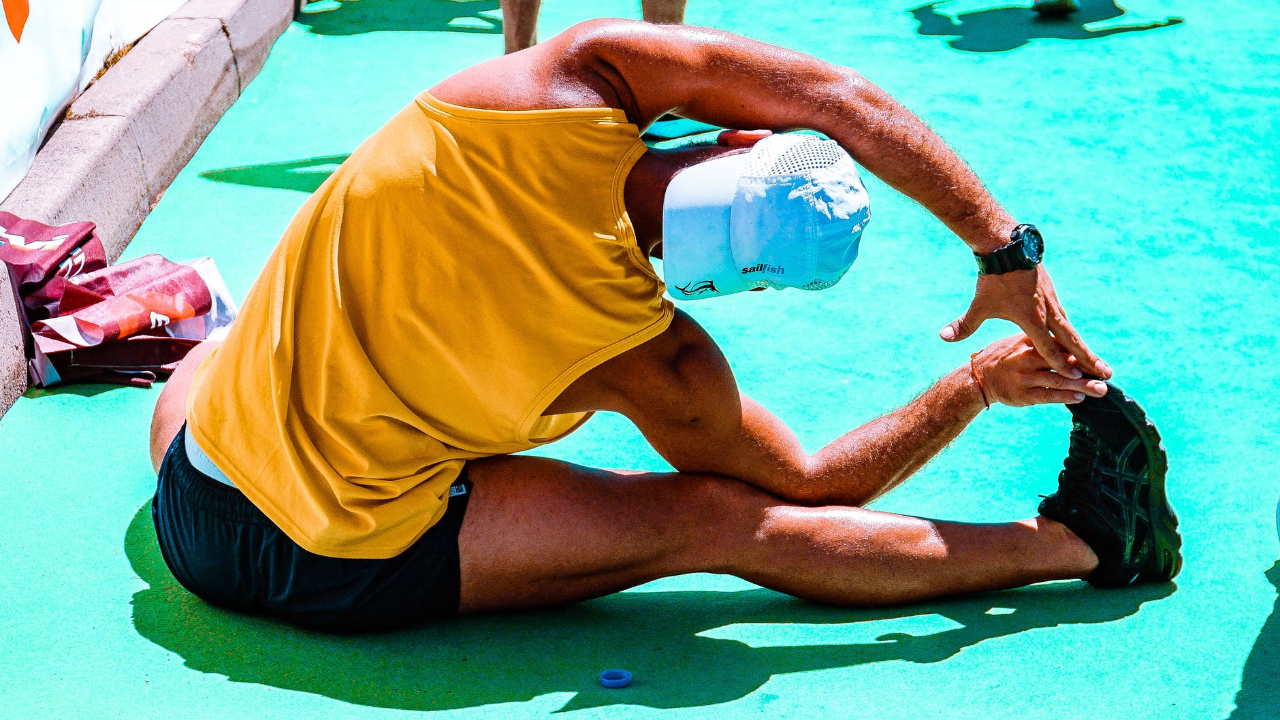
Stretching is very important. It helps keep the muscles loose, flexible, helps you to be more mobile, and helps prevent sarcopenia from occurring. But when is the best time to stretch? When is it not only the most beneficial but also the safest time to stretch? Most think it’s right before your workout. Some say during the workout. Some say after the workout. Well, the correct answer is after the workout is complete. This may come across as shocking to a lot of people as most people like to stretch before leg day, before a run, before a bike ride or even before going hiking. Well here is an analogy to help you understand why.
If you were to get a rubber band and put it in the freezer and then after a few hours pull it out and then stretch it, what would happen to it? It would snap. Now if you took a rubber band and put it into, say a microwave, and heated it up for a little bit and then took it out and stretched it, what would happen to it then? It would not snap and it would actually stretch further. So think of your body as a bunch of rubber bands. You need to fully warm it up before you do any stretching. Otherwise, you can snap the tendons. Then you will have a serious problem. Rehab for sure, and on severe cases, surgery. So it is best to always do your stretching after you have done your workout as this will allow you to get the muscles moving, warm them up, get them loose, bring in the blood to the affected area which will bring nutrients and oxygen to the muscles.
One of the concerns people have about not stretching before a workout is being too stiff or tight to do any of the lifts for their workout.
Well, this is why you do warm-up sets with lighter weight and higher reps. This allows the muscles to get loos and not be so tight. Depending on how tight and stiff you are you can do anywhere from 1-3 sets before you do your first working set.
Now, what about if you are going to do a run, ride a bike, or go for a hike. What can you do then to warm up? Simple, walk for a few minutes. Nothing too stressful. Not yet at least. You will need a few minutes of moving around to get those muscles warm, loose and get some blood flow going. If you are riding a bike, ride it lightly and easily for about 5 -10 minutes. Going for a hike, walk for a few minutes on a flat surface before you start the inclines.
Here is another analogy.
Think of your body as an engine of a car.
When you start your car after it has been sitting overnight you let it run and warm up, yes? I mean, you really should. This allows the oil in the car to move around within the engine to lubricate it and let all the cylinders, valves, pistons and other moving components to work efficiently. When you warm up it allows the synovial fluid to start moving around and lubricating your joints thus allowing you to perform the movements more freely and easily and not causing so much friction within the body.
What about if you are going to be doing yoga? Simple. You can either take a nice long soothing hot/warm shower or a bath for at least 10-15 minutes. The warm water will allow the muscles to relax and loosen up making it easier for you to perform more flexible movements. However, this does not get they synovial fluid moving around the joints. Just loosens up the muscles making it easier to perform movements and poses.
So there you go. Stretching is done ideally at the end of a workout when the body is warmed, muscles are loose, and synovial fluid is flowing. Hope this article helps you out. If you have any questions regarding this or any form of training feel free to contact me.
Mike Burns from Mikes Body Sculpting



